KARACHI: It was such a pleasure listening to distinguished nonagenarian social and political activist Rochi Ram talk about Karachi’s importance in the socio-political fabric of the country in his keynote address on the second day of the 6th International Karachi Conference at the Institute of Business Administration.
Mr Ram, who hails from Tharparkar, said he had been living in Karachi for the past 10 years. It was in 1921 that his father first came to Karachi to do business. In those days doing business was not an easy proposition, so he went back to Tharparkar. In 1945 he (Ram) came to Karachi to take his matriculation exam (which he took in Hyderabad). In those days you could do that from three centres –– Karachi, Hyderabad and Shikarpur. Those were good times; there was no inflation; and there was no concept of buying milk throughout Sindh.
Mr Ram said Karachi was a fishing zone. Migrants (post-independence) added to the culture of the town. The city was influenced more by the migrant community than anyone else. Now [in the 21st century] things were further changing. CPEC was a huge change. It’s up to Karachiites to see whether another East India Company was in the making or it was something that could be used in their favour. Karachi bore the biggest responsibility, because the main issue that Pakistan was facing was not terrorism, but the fact that we often went begging [to other countries] to seek economic stability.
Karachi’s role in country’s development highlighted
Praising the migrant community, Mr Ram said Karachiites made schools in the city and had people such as Dr Adib Rizvi who were serving mankind. He, however, cautioned that demands of Karachi’s separation from Sindh were not right because there were three bigger cities [of the world] than Karachi –– London, New York and Tokyo –– where the native population was outnumbered by others; but there was no such demand there.
He lamented the conditions prevailing in Sindh where patients travel miles to reach hospitals. In that context, Karachi’s responsibility increased to use its resources and help other parts of Sindh. He also mentioned the name of Liaquat Ali Khan who, he said, left his lavish property in Karnal (India), and when he passed away in Pakistan, he didn’t own even a house.
Earlier, Mr Ram was introduced to the audience by eminent architect Arif Hasan, and two welcome addresses were delivered by Asma Ibrahim and Huma Baqai.
The first formal session of the day, just like Mr Ram’s speech, proved to be extremely thought provoking.
Fahim Zaman set the tone for it by giving a presentation on densification of the city and its political repercussions. He said the most important aspect of Karachi was its geography. With the help of maps he told the audience that in 1838 Karachi had a population of 15,000. Then the British conquered Sindh. By 1861 the population had gone up to 80,000.
Giving examples of how politicians used the influx of population and other reasons such as post-independence migration which disrupted the demographic balance in the city, Mr Zaman pointed out that in 1961 the population burgeoned to 1.9 million and in 1998 it had hit the 10 million mark. Today, he said, there were nearly three million motorcycles in Karachi, 1.7m cars but only 10,000 buses.
Drowning in sewage
Kaiser Bengali gave a presentation on ‘A case for Integrated Local Government’. He said civic services and the infrastructure in urban Sindh was in a state of collapse where we coexisted with garbage and sewage. There’s no daily water supply and there’s no dignity in using public transport. While Karachi came across as an 11th century town, Larkana was the biggest embarrassment of Sindh. Five thousand years ago people of Moenjodaro knew how to use the water system, and today almost the entire Larkana was drowned in sewage.
Mr Bengali said four essentials were required on a daily basis to run a city: water supply, waste water disposal, solid waste disposal and public transport. The reasons for the broken services were the fragmentation of service delivery functions and political divide. The core of the problem was the building control authority. Anyone could construct a ground-plus-six in low-density areas. The federal government controlled half of the city; they’re law unto themselves. They built high-rises wherever they pleased, so there’s no electricity, sewage or water supply coordination. The Constitution had two chapters, one on the federal government and the other on the provincial government, which defined the structure of the governments. But there’s no chapter on local government. We needed a chapter on local government, he said.
Mr Bengali said the Pakistan Peoples Party (PPP) didn’t have a vote bank in Karachi, so it did not do much for the city, and was not willing to give power to the Karachi metropolitan authorities.
He highlighted that the way forward was to have an integrated local government. And Sukkur, Nawabshah, Hyderabad and Karachi should have metropolitan authorities.
Marvi Mazhar gave a presentation on the gap between building policies and what happened on the ground.
Babar Sheikh’s presentation was titled ‘Chronicles of the Walled City’ in which he spoke about the walls that had suddenly sprung up after advertising billboards were taken down.
M. Siddique’s paper dealt with a similar subject as one of the previous speaker’s. He said Karachi was one of the least liveable cities in the world. Here, growing encroachments into electricity lines had become a public hazard.
The session was chaired by architect Arif Hasan. Summing up the presentations, he said Karachi was not the only city that faced such problems. Many towns in Latin America and South Asia confronted no different issues. Things were slightly better in other cities because services and utilities had improved. The most important thing was that in those cities institutions had credibility (idaron ki saakh hai), whereas in our part of the world, the institutions had no credibility. Institutions had been compromised to gain political benefits. Mr Hasan underlined that the money that was spent in making flyovers could have been used on transport which would have been useful for the public. He concluded his statement by saying that Karachi was run on jugaar (improvisation).
Published in Dawn, November 11th, 2018



























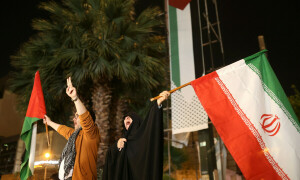
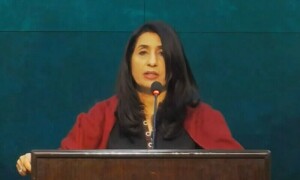

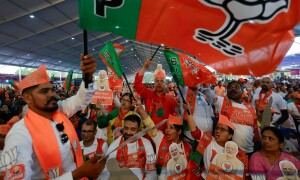
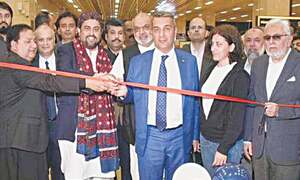


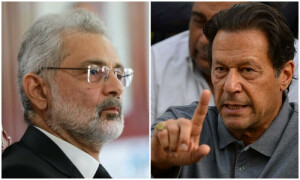













Dear visitor, the comments section is undergoing an overhaul and will return soon.